The Five Best Giant Buddhas (Daibutsu) of Japan
 Hello! I’m Clinton Butler, currently living in North Texas but soon to leave for South America for a few months. After that I hope to end up on the west coast. I’ll be spending time in Argentina and Peru if everything goes according to plan.
Hello! I’m Clinton Butler, currently living in North Texas but soon to leave for South America for a few months. After that I hope to end up on the west coast. I’ll be spending time in Argentina and Peru if everything goes according to plan.
While posts having to do with Suramérica will have to wait a few months, I do have a bit of experience with Japan. A few years ago I spent a summer living in Japan with friends all over the country, and after that I came back to Texas and finished my minor in the language.
Of particular interest to me were, and are, the Giant Buddha statues all over the country. Worshiped and revered, these statues are more than just bronze, copper, or stone to the culture they permeate. So here, I present to you: Five of My Favorite Daibutsu or ‘Giant Buddhas’ of Japan! Starting with number five:
5. Takaoka Daibutsu: The Great Buddha of Takaoka
Photo by Buck82
Although a large image of the Buddha has been located in Takaoka since at least 1221, the particular giant Buddha itself has been replaced many times. In 1745, a priest at the Gokurakuji temple carved a Great Buddha out of wood and painted it gold, but this particular Daibutsu was destined to burn, several times, and in 1900, a great fire completely destroyed the last wooden Daibutsu in Takaoka.
Photo by Sandman_kk
Construction on this current copper rendition began in 1907 and was completed in 1933. Built by Matsuki Sozaemon and local coppersmiths, the current statue took nearly 30 years to complete. Numerous repairs and renovations have been undertaken since its completion, and it seems the upkeep of the Takaoka Daibutsu is a continual struggle, but then, at least copper can’t burn.
Photo by Mullenkedheim
Four more amazing Giant Buddhas after the jump…
4. Showa Daibutsu: The Great Showa Buddha of Seiry?ji
Photo by showa-daibutu.com
Located in Aomori, at the Seiry?ji (Blue-Green Dragon) Temple is a colossal likeness of Dainichi Nyorai completed in 1984. This particular Buddha, known primarily as Vairocana in the sanskrit, is the principal deity of the esoteric Shingon sect of Buddhism. This particular Daibutsu is the tallest seated bronze statue of the Buddha in Japan, taller even than the famous Daibutsu of Nara.
Photo from Wiki Commons
Shingon Temples hold light ceremonies during the Bon Festival, in mid-August, to help those in a liminal state between life and death successfully transmigrate. Often, during this time, parents of a recently departed child will pray for the pacification of their own souls, and for that of the child’s. The Seiry?ji Temple is no different in this respect, holding grand light ceremonies for the entirety of the Bon Festival.
Photo by Katsniffen
3. Nihonji Daibutsu: The Great of Buddha of Nihonji
Photo by Stoicviking
This giant Buddha is a unique one, being an effigy of Yakushi Nyorai, the Buddha of Healing, known as Bhaisajyaguru in Sanskrit. The immense image of Yakushi was carved out of Mt. Nokogiri, named for the saw-tooth appearance of the mountains in the range of the same name.
Photo from Wiki Commons
The temple itself dates back to 725 CE, the Great Buddha and 1500 other statues and carvings were created by the master artisan Jingoro Eirei Ono and his army of twenty five plus apprentices in the 1780s. So large is the Buddha of Nihonji that it appears on Google maps, (the circle in the upper right hand corner) and a comparison with the nearby parking lot gives a good sense of its massive size.
2. Ushiku Daibutsu: The Great Buddha of Ushiku
Photo by Tsukubajin
This massive, towering visage of Amida Nyorai, known more commonly by his Sanskrit name Amit?bha, was the tallest statue in the world for a time. Its reign lasted from when it was finished in 1995 until 2002, when an effigy of Vairocana was completed in Lushan, China. Since then, another statue was completed in Myanmar that is 6 meters taller, making this Japanese giant the 3rd tallest statue in the world.
Photo by Ckubber
The deity depicted, Amit?bha or “Buddha of Infinite Light”, is a celestial buddha, as described in the Mah?y?na scriptures. In Japan, Amida Nyorai is the central buddha of the Pure Land sect. Amida is known for his good deeds spanning innumerable past-lives, after attaining enlightenment, he allowed himself to be continually reborn to help others, the true sign of a Bodhisattva.
Photo by Ginza-line
One can take an elevator to an observation room in the chest of the statue, from here the beautiful countryside is in plain view.
Photo from Wiki Commons
1. T?daiji Daibutsuden: The Great Buddha Hall
T?daiji is the name of the temple, and Daibutsuden means ‘The Great Buddha Hall’, and while it may not be the biggest or baddest Daibutsu, for me, this is the one that started it all.
Photo by Herrolm
While staying with a friend and his family in the mountainous countryside of Nara, his mother suggested we go down and see the Daibutsuden. Once we parked and started walking towards the temple, I noticed that there were countless deer just roaming the park, and occasionally the streets, just outside the temple gates. Little street vendors sold crackers to feed the deer, so naturally I bought some. As soon as I had the crackers in my hand, the deer were already signaling that they were ready to be fed, by biting me square on the buttocks.
Photo from Wiki Commons
The Sika Deer followed us right up to the temple gate, but went no further. The entryway was behemoth, with two towering guardians on each side, protecting the great Buddha. Upon reaching the pathway leading to the Great Buddha Hall, one is filled with awe. The building housing the Daibutsu is the largest wooden building in the world, which becomes quite obvious the closer you get to it.
Photo from Wiki Commons
Once inside, there were numerous artifacts to observe beyond the Great Buddha. One can learn the history of the building and area surrounding. As Nara was once the capital of Japan, there was much intriguing history to digest. Among the other things to see are miniature replicas of the temple and the grounds, various Buddhist statues, and a wooden column with a hole in the bottom that brings good luck if you can crawl through it. Naturally, I did.
Photo by Canadagood
And there you have it, five of the Best Giant Buddhas (Daibutsu) of Japan. Until next time - Clint

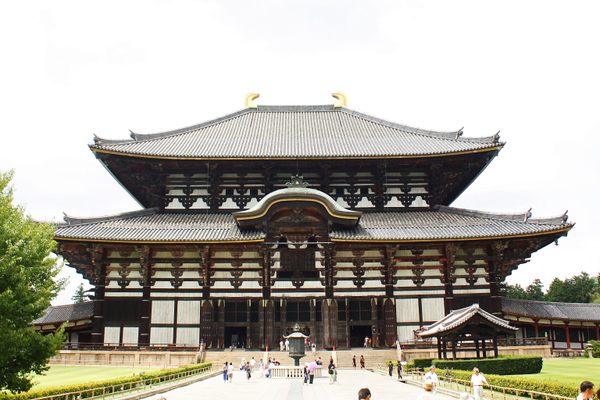
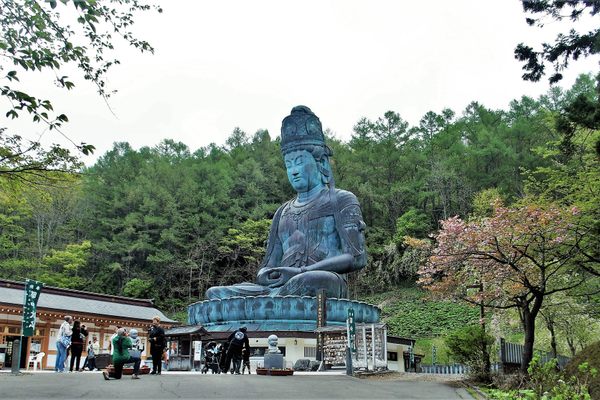
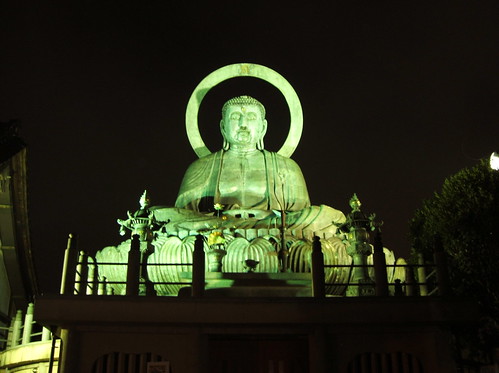
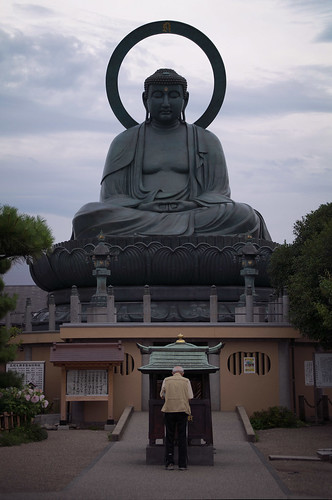

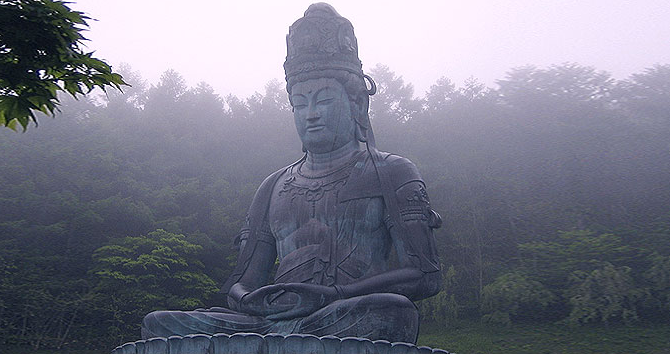


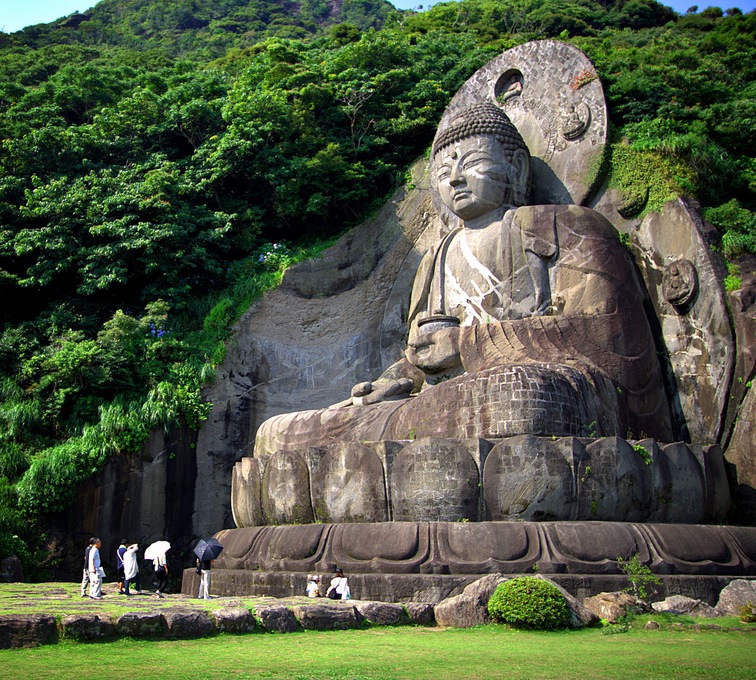

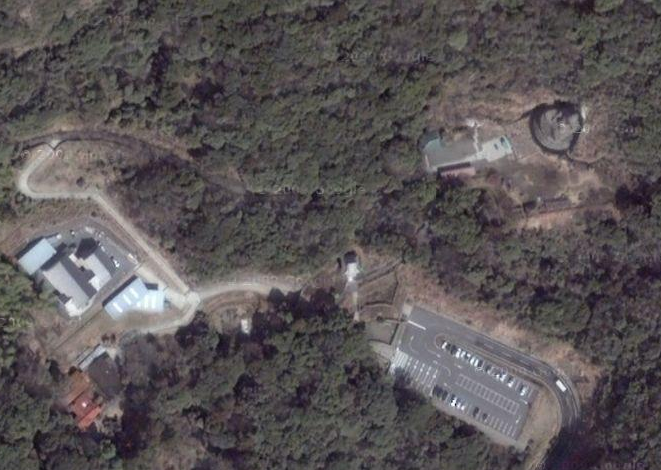

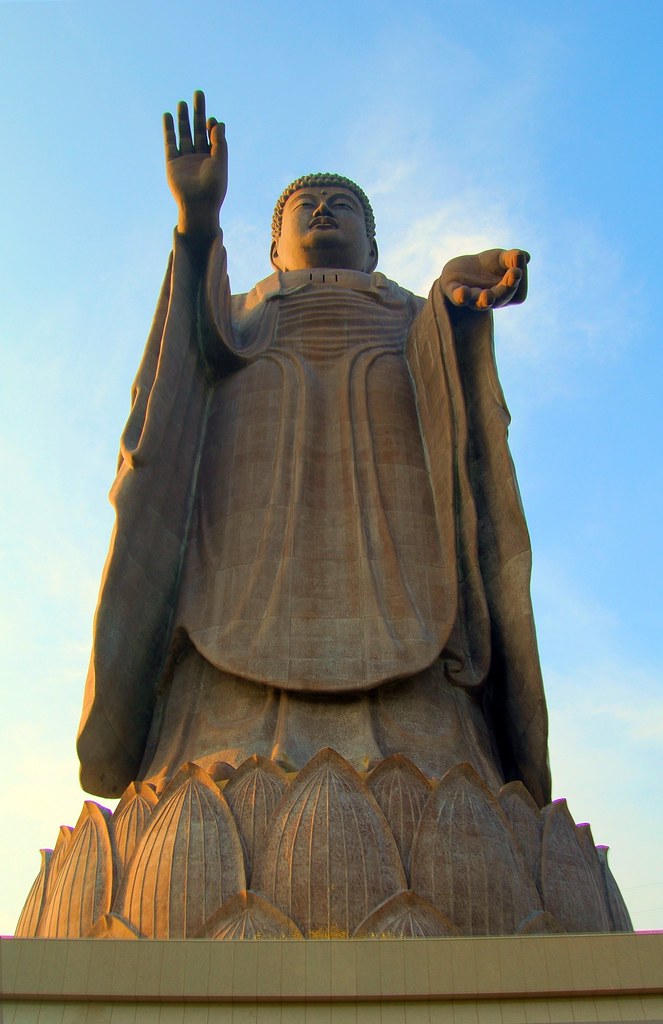
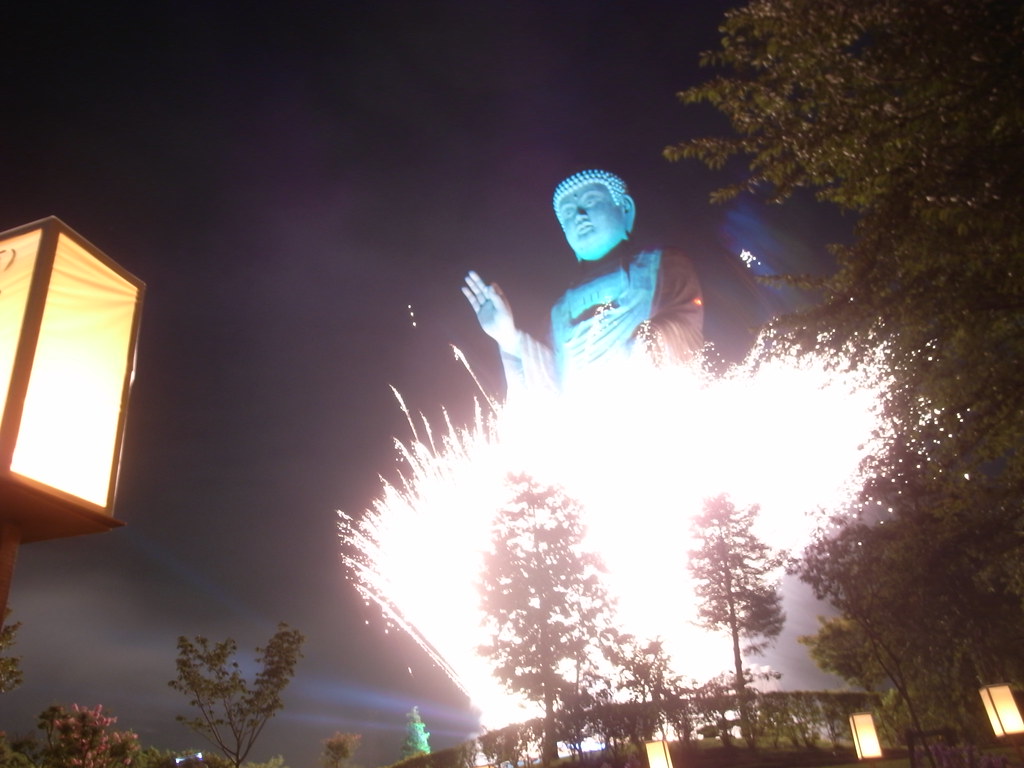

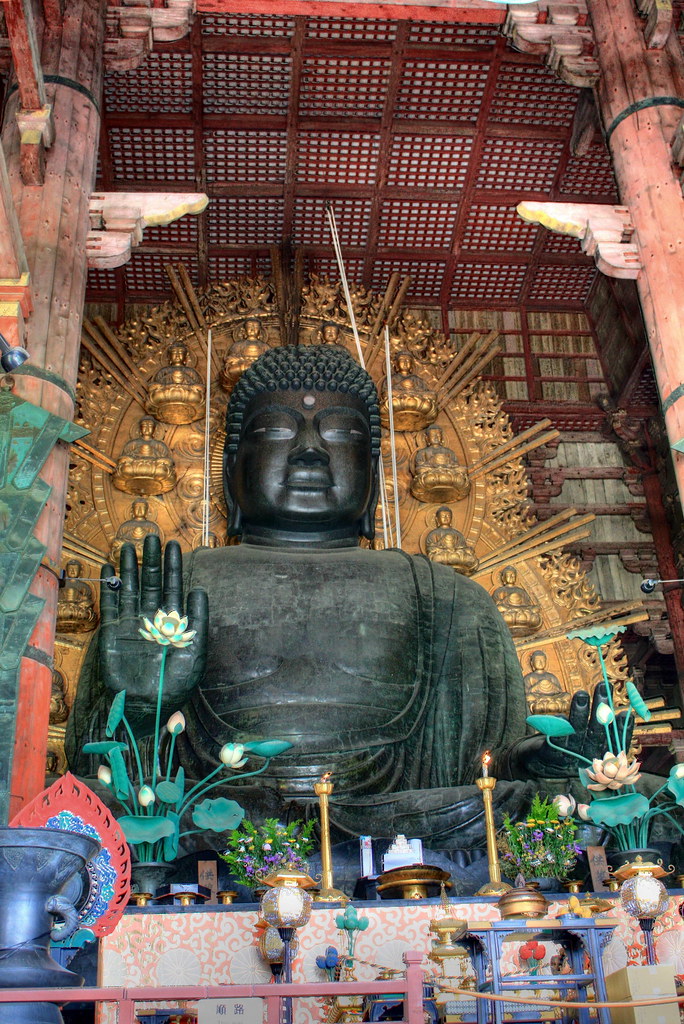
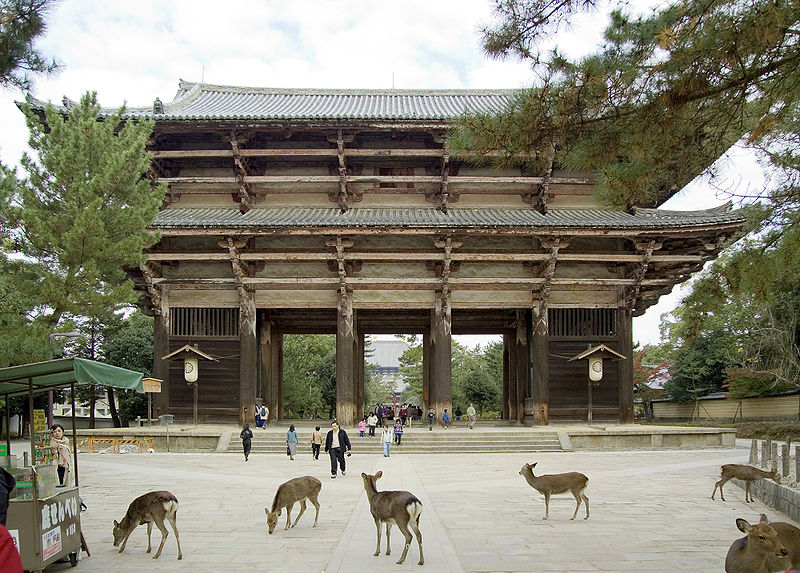





Follow us on Twitter to get the latest on the world's hidden wonders.
Like us on Facebook to get the latest on the world's hidden wonders.
Follow us on Twitter Like us on Facebook